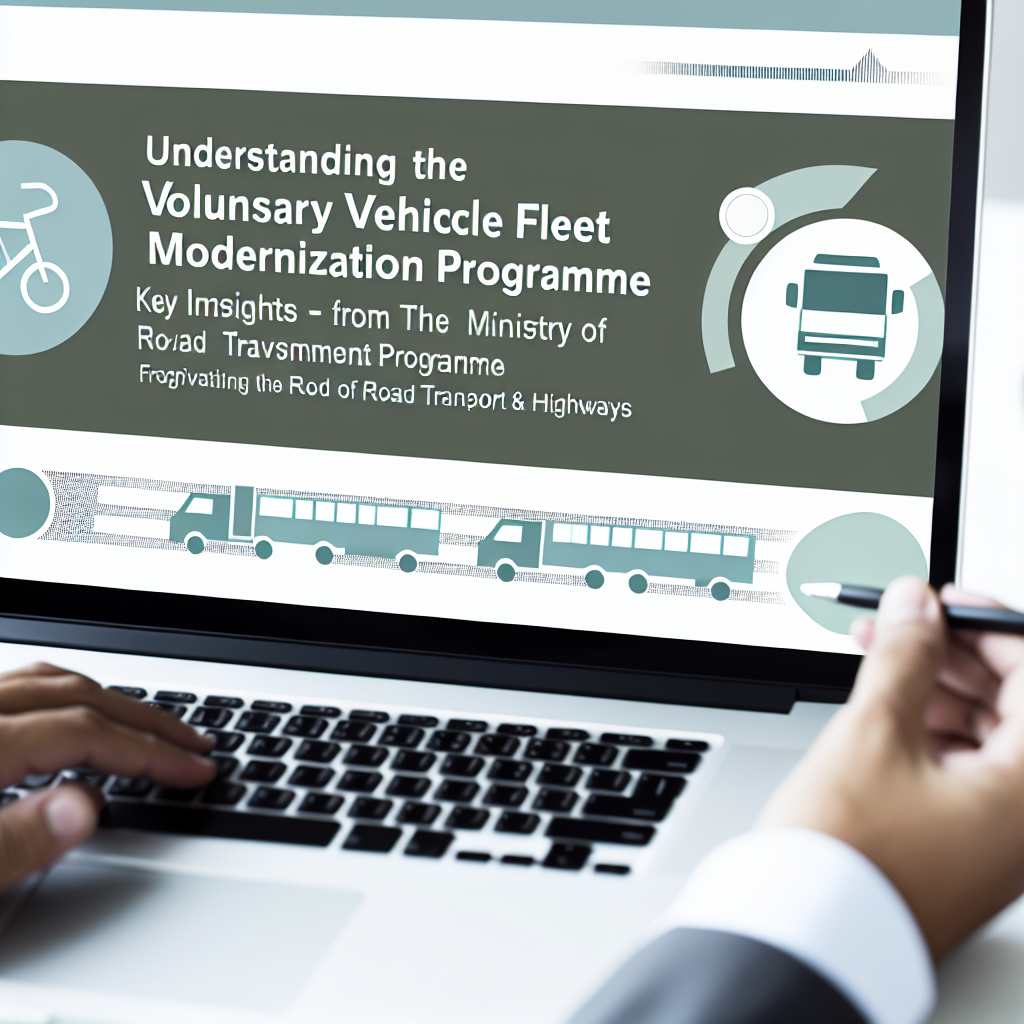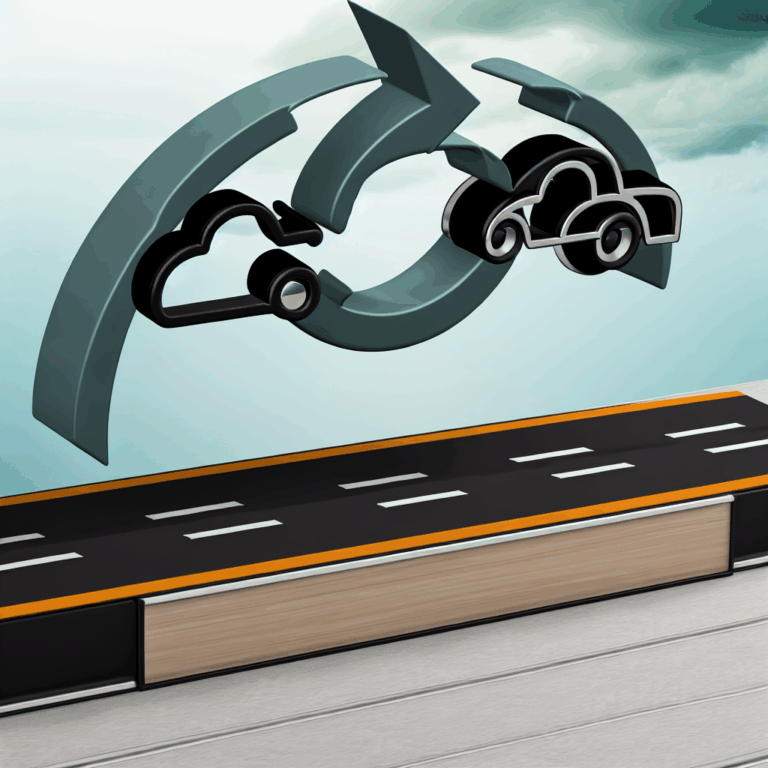Copyright @ 2023 www.digimitr.com. All rights reserved.

Understanding the Voluntary Vehicle Fleet Modernization Programme: Key Insights from the Ministry of Road Transport & Highways
Explore the important features of the government scheme titled “Understanding the Voluntary Vehicle Fleet Modernization Programme: Key Insights from the Ministry of Road Transport & Highways”. This scheme is overseen by the relevant ministry and aims on providing benefits to eligible beneficiaries.
Here is a comprehensive overview:
Introduction
The Voluntary Vehicle Fleet Modernization Programme (VVMP) is a strategic initiative launched by the Ministry of Road Transport and Highways (MoRTH) in India. This program is aimed at promoting the replacement of old and polluting vehicles on Indian roads with newer, more efficient models. The initiative is crucial in addressing several pressing issues, including environmental concerns, road safety, and enhancing fuel efficiency. By encouraging vehicle owners to upgrade their fleets voluntarily, the VVMP aims to reduce air pollution and improve the overall vehicular quality on Indian roads.
Eligibility Criteria
To participate in the VVMP, vehicle owners must meet certain eligibility criteria. Firstly, the program is primarily targeted at personal vehicle owners, commercial fleets, and public transport systems. Vehicles eligible for scrapping under this initiative generally include those that are older than 15 years and fall under various categories such as cars, two-wheelers, and commercial vehicles. Furthermore, applicants must possess valid vehicle registration, and the vehicle must be in working condition at the time of application. The program encourages small operators and individuals who may struggle with the financial burden of upgrading their vehicles.
Key Features and Benefits
The VVMP boasts a plethora of features and benefits aimed at incentivizing vehicle owners. One of its primary characteristics is the provision of financial assistance for scrapping old vehicles, which can significantly reduce the upfront costs associated with purchasing new models. Additionally, the program offers a robust framework for facilitating the registration and certification of scrapped vehicles, making the transition seamless for users.
The benefits of participating in this program are multifaceted. For individual vehicle owners, the program provides both financial incentives and peace of mind knowing they are contributing to a cleaner environment. For businesses operating fleets, upgrading to newer vehicles can yield significant cost savings in fuel consumption, maintenance, and insurance. Furthermore, improved vehicle performance can enhance road safety, reduce emissions, and align with broader governmental objectives related to environmental sustainability.
Application Process
The application process for the VVMP is designed to be user-friendly. Interested vehicle owners can begin by visiting the official MoRTH website or designated facilitation centers where they can access application forms and detailed guidelines. Once the application is filled out, vehicle owners must submit required documentation, including vehicle registration papers, proof of ownership, and identity verification. Following this, a verification process will be conducted to ascertain eligibility.
Upon successful verification, vehicle owners will receive an ‘Approval Certificate’ which enables them to proceed with the scrapping of the old vehicle. Once the scrapping is completed, they can avail themselves of incentives and rebates on the purchase of new vehicles from registered manufacturers participating in the VVMP.
Funding and Budget
The funding for the Voluntary Vehicle Fleet Modernization Programme is allocated from the government’s environmental and infrastructure budgets. A significant portion of the finances comes from Central and State governments, including financial institutions that participate in loan schemes for purchasing new vehicles. Additionally, funds are set aside specifically for educating vehicle owners about the VVMP and implementing the necessary infrastructure for scrapping old vehicles. This multi-source funding ensures the program’s sustainability and progress.
Achievements or Impact
Since its inception, the VVMP has made commendable strides in improving vehicular conditions across India. Reports indicate that thousands of outdated vehicles have been successfully scrapped, resulting in substantial reductions in emissions and pollution levels. The program has not only contributed to a cleaner environment but has also stimulated economic activity in related sectors, including automobile manufacturing and ancillary industries.
Several studies showcase positive impacts on public health and quality of life in urban areas where older vehicles have been systematically removed from the roads. The VVMP has also played a vital role in raising awareness about the importance of responsible vehicle ownership and sustainable transportation.
Challenges
Despite its successes, the VVMP faces several challenges. One notable hurdle is the general inertia among vehicle owners, particularly those who remain reluctant to part with their older vehicles due to sentimental value or limited financial means. Additionally, there can be bureaucratic delays in the application and approval process, which may deter some potential participants. The lack of sufficient scrapping facilities in certain regions also poses logistical complications, hindering the smooth operation of the program.
Recent Updates
In response to the challenges faced, the Ministry of Road Transport and Highways has continuously updated the VVMP framework. New initiatives such as mobile application integration have been introduced, allowing for easier access to information and services. Furthermore, collaboration with private sector stakeholders has been expanded, leading to enhanced incentives and promotional campaigns. The government has also initiated partnerships with financial institutions to facilitate auto loans specifically tailored for vehicles purchased under the VVMP.
Conclusion
The Voluntary Vehicle Fleet Modernization Programme represents a crucial step towards achieving a cleaner, safer, and more efficient transportation system in India. By providing financial incentives and a streamlined application process, the program encourages vehicle owners to actively participate in this transformative initiative. Although challenges remain, continuous revisions and updates to the program highlight the government’s commitment to reducing pollution and enhancing the quality of life for its citizens. Through the VVMP, India is taking meaningful strides toward a sustainable future in vehicular transportation.
FAQ
1. What types of vehicles are eligible for the VVMP?
Vehicles that are older than 15 years, including personal cars, two-wheelers, and commercial vehicles, are eligible for the VVMP.
2. How can I apply for the VVMP?
You can apply for the VVMP by visiting the official MoRTH website or designated facilitation centers. You will need to fill out an application form and provide necessary documentation.
3. What financial incentives are offered to participants?
The program provides financial assistance for scrapping old vehicles, as well as incentives and rebates on the purchase of new vehicles from participating manufacturers.
For more information, check out official government site,
Official government website or relevant source not provided.
Stay updated on related schemes and initiatives using hashtags: #Understanding #Voluntary #Vehicle #Fleet #Modernization #Programme #Key #Insights #Ministry #Road #Transport #Highways
Share your thoughts about this scheme in the comments below!





